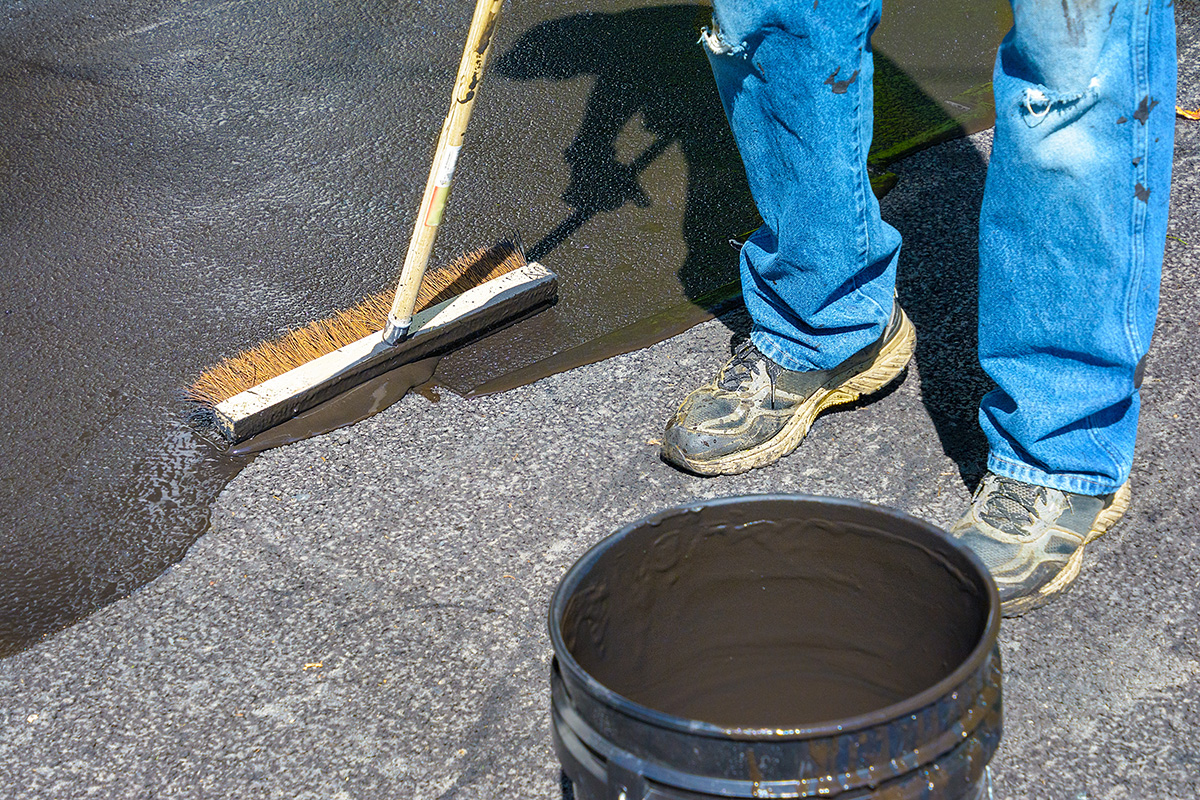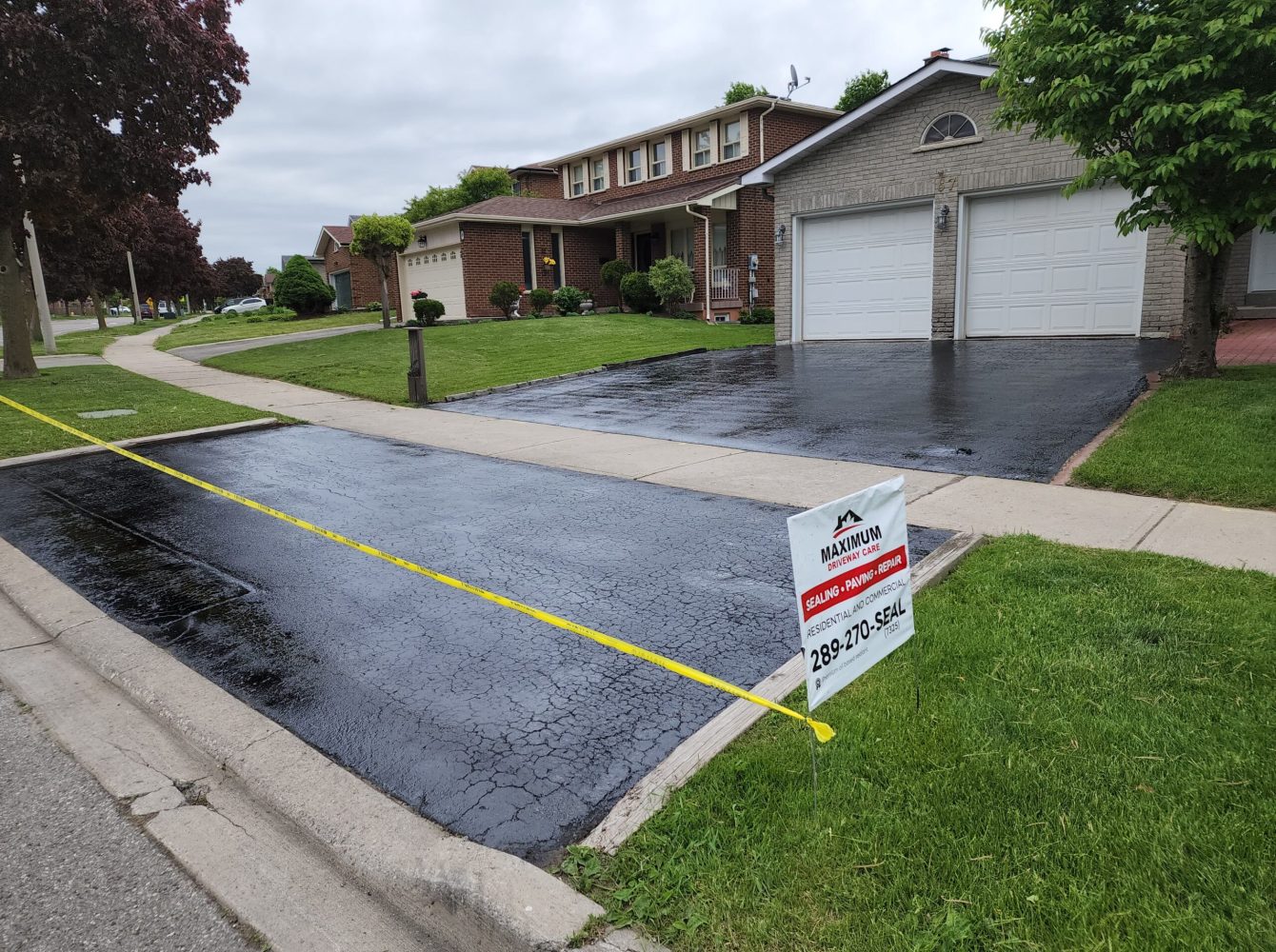Boost Commercial Allure: Warm Mix Asphalt Sealing for Angled Parking Lots
Wiki Article
Hot Mix Asphalt: A Lasting Service for Pavement
Warm Mix Asphalt (HMA) has emerged as a leading lasting option for pavement options, providing a myriad of environmental advantages and ingenious innovations. As the demand for environment-friendly construction techniques grows, exploring the nuances of HMA's sustainability can supply important understandings right into the future of pavement remedies.Environmental Benefits of Hot Mix Asphalt

In Addition, Warm Mix Asphalt aids to alleviate metropolitan heat island effects. Its dark shade absorbs sunshine, decreasing the quantity of warm showed back right into the atmosphere contrasted to lighter-colored sidewalks. This can reduce ambient temperature levels in metropolitan locations, reducing the demand for air conditioning and ultimately minimizing power consumption.
Furthermore, Hot Mix Asphalt adds to improved stormwater management. Its permeable nature enables water to reenergize and infiltrate the pavement groundwater products, decreasing runoff and the risk of flooding. These environmental benefits make Hot Mix Asphalt a sustainable option for leading roadways and freeways.
Energy Performance in HMA Production
Is power efficiency an essential variable in the production of Hot Mix Asphalt (HMA)? Absolutely. Energy plays a considerable function in the manufacturing of HMA, influencing both cost and environmental sustainability. One key facet of power performance in HMA manufacturing is using cozy mix asphalt (WMA) modern technologies (hot mix asphalt). WMA permits the blending and positioning of asphalt at lower temperature levels contrasted to typical warm mix asphalt, resulting in minimized energy consumption throughout manufacturing. This process not just reduces fuel use yet likewise lowers greenhouse gas exhausts, making it a much more eco-friendly alternative.Furthermore, advancements in plant modern technologies have actually led to even more energy-efficient HMA production procedures. Modern plants are developed with features like recycled asphalt pavement (RAP) processing capabilities, reliable heater systems, and improved insulation, all adding to power savings. By optimizing energy use in HMA manufacturing, the sector can decrease its carbon footprint while preserving high-quality sidewalk products. Energy efficiency is, consequently, a critical consideration in making sure the sustainability of Warm Mix Asphalt manufacturing.
Recyclability of Warm Mix Asphalt
The recyclability of Warm Mix Asphalt (HMA) is an essential facet of its sustainability and long-term environmental effect. HMA is among one of the most recycled materials in the USA, with over 100 million tons of recovered asphalt pavement (RAP) being recycled every year in new pavement building. Reusing HMA supplies numerous environmental benefits, such as reducing the need for virgin materials, reducing power intake during production, and reducing the amount of waste sent out to landfills.The procedure of recycling HMA involves crushing the existing sidewalk, crushing it right into smaller sized items, and blending it with brand-new aggregate and asphalt binder to develop a recycled mix. Generally, the recyclability of HMA plays a considerable role in promoting lasting Our site methods within the pavement sector.

Long-Term Efficiency of HMA
Asphalt pavements show sturdiness and resilience over a prolonged period, mirroring the long-term efficiency of Warm Mix Asphalt (HMA) Furthermore, innovations in HMA innovation, such as the usage of polymer-modified binders and cozy mix asphalt, have actually further improved the longevity and long life of HMA sidewalks. By prioritizing top quality construction and maintenance methods, HMA continues to confirm itself as a cost-efficient and sustainable service for lasting pavement infrastructure.
HMA: Resilience and Sustainability
Showing both toughness and sustainability, Hot Mix Asphalt (HMA) has actually ended up being a keystone in the construction of durable pavement frameworks - regrading. HMA's resilience originates from its capability to withstand hefty lots, extreme climate condition, and high website traffic quantities, making it a trusted option for streets, freeways, and airport terminal paths. The structure of HMA, which normally consists of aggregates, binder, and filler, plays a critical role in boosting its longevity and resistance to damage
In addition, HMA's sustainability depends on its recyclability and energy-efficient manufacturing procedure. The ability to reuse redeemed asphalt sidewalk (RAP) in new HMA blends lowers the demand for virgin materials and lessens the ecological impact of sidewalk building and upkeep. In addition, the power efficiency of producing HMA lies in its lower mixing temperatures contrasted to various other sidewalk products, causing decreased power intake and greenhouse gas exhausts.
Verdict
Finally, warm mix asphalt (HMA) offers a sustainable service for pavement with its ecologically friendly attributes. HMA's recyclability, power performance in manufacturing, and lasting resilience make it an environment-friendly option for roadway building and construction. By preserving natural deposits, minimizing waste, and reducing greenhouse gas discharges, HMA plays an important duty in advertising sustainability in framework development. Its capability to minimize city warmth island effects further underscores its importance in creating eco mindful and resilient pavement systems.
HMA is one of the why not try these out most recycled products in the United States, with over 100 million tons of redeemed asphalt pavement (RAP) being reused yearly in brand-new pavement building.The process of reusing HMA involves crushing the existing pavement, squashing it into smaller read here sized pieces, and blending it with new accumulation and asphalt binder to create a recycled mix.Asphalt sidewalks demonstrate longevity and strength over an extended duration, reflecting the long-term efficiency of Hot Mix Asphalt (HMA) In addition, improvements in HMA technology, such as the usage of polymer-modified binders and cozy mix asphalt, have better improved the longevity and longevity of HMA sidewalks. The capacity to reuse recovered asphalt sidewalk (RAP) in brand-new HMA mixtures minimizes the need for virgin materials and decreases the environmental effect of sidewalk construction and maintenance.
Report this wiki page